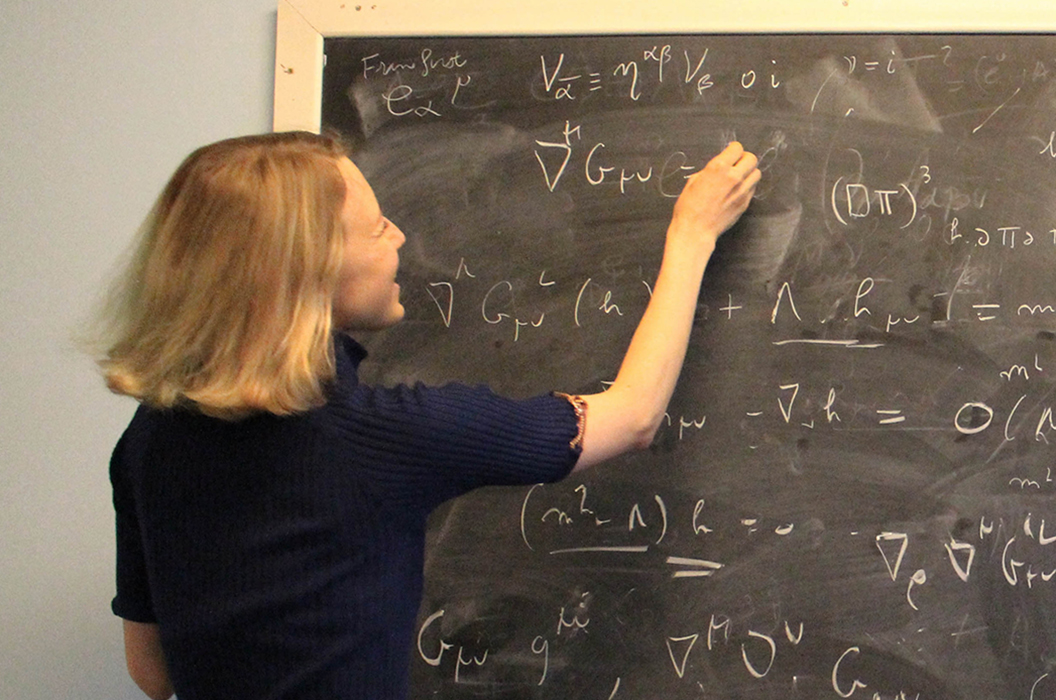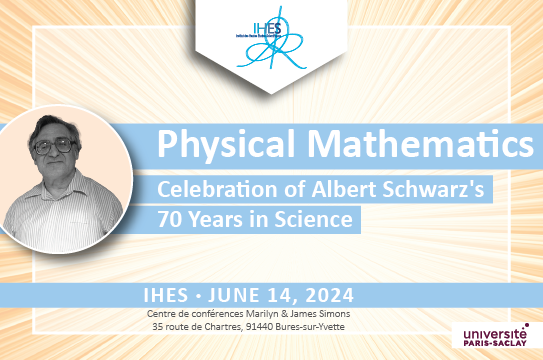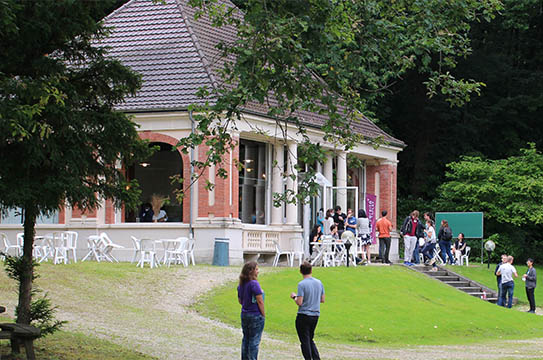 IHES
IHES
Science and Society: The case of Venice
Vasilisa Nikiforova, a physicist and a post-doctoral fellow at IHES, presents an unknown facet of Galileo’s work through his discussions with the Arsenal of Venice.
Generalities on the importance of science in the development of modern societies abound. It is, however, interesting to turn to the past, and to examine specific examples. Here, I would like to offer some brief remarks from a non-specialist perspective, on Science and Venice.
476, 1204, 1453: The end of the Western Roman Empire (marked by the abdication of its last emperor, Romulus Augustulus), the capture of Constantinople by the army of the 4th Crusade (led by Venetians), the capture of Constantinople by the Ottomans. Byzantium is the successor of the Roman Empire, while Venice is considered as the successor of Byzantium. Not because of the huge amount of treasures which Venetians removed from Constantinople after the 4th Crusade (notably the famous horses on displayed on the roof of San Marco). But rather because Venice was two-headed, and one of the Venice’s heads always looked towards the East, and was part, and transmitter, of Byzantine culture.
The close trade contacts between Venice and Constantinople made the former an important transmitter of the Greco-Roman philosophical tradition to the West. Thanks to her, in the 12th – 13th centuries, Western Europe discovered many of Aristotle’s treatises. This role of Venice was also later (after the arrival of typographical art in Venice in 1469) provided by the fact that, being at the junction of a very active net of commercial relations and relatively independent of the censorship of the Catholic Church in Rome, Venice was one of the most important publishing centres of the time. At the decline of Constantinople and after its fall, many of its best minds flocked to western Europe (and notably to Venice). It is generally accepted that this influx of Byzantine scholars after 1453 was one of the important factors in the humanistic Renaissance. Venice was one of the few centres in Europe which welcomed Byzantine scholars in large numbers. As John J. Norwich writes in his book, “when, even before Constantinople finally fell [meaning 1453], refugees from all over the crumbling Empire were settling in Venice, recognizing her as the most Byzantine city in the West, and bringing with them their libraries, their works of art, and a new spirit of learning and scholarship” (John J. Norwich. A history of Venice).[1] This way Venice played a major role in preserving ancient knowledge.
But was Venice receptive to the importance of humanistic culture and in particular, was Venice interested in theoretical knowledge, or was she too practically minded to foster abstract knowledge?
Galileo and the Arsenal of Venice
The development of technology in shipbuilding and navigation allowed Venice to become the leader of Mediterranean seafaring for centuries. At the beginning of the book that launched the modern scientific revolution, namely the Discourses on Two New Sciences, Galileo praises the artisans of Venice’s Arsenal:
“Frequent experience of your famous arsenal, my Venetian friends, seems to me to open a large field to speculative minds for philosophizing, and particularly in that area which is called mechanics, inasmuch as every sort of instrument and machine is continually put in operation there. And among its great number of artisans there must be some who, through observations handed down by their predecessors as well as those which they attentively and continually make for themselves, are truly expert and whose reasoning is of the finest.”
Many science historians have tended to downplay the importance of this praise, but modern science historians have, however, revisited the real meaning of Galileo’s praise of Venice’s arsenal. Indeed, in their fascinating work “Galileo and the Challenge of the Arsenal”[2] Jürgen Renn and Matteo Valleriani convincingly argue that Galileo should be thought of as a Renaissance “engineer-scientist” of a similar type to those who could also be found in the Arsenal. Moreover, both of the “two new sciences” that Galileo pioneered in his Discorsi[3] were spurred by Galileo’s genuine interest for practical (especially technological or military) issues. His researches (mainly conducted in Padua) on dynamics (the second of his two new sciences) were prompted by his interest in artillery.
Of most importance to the present article is the fact, proven by Renn and Valleriani, that the first of Galileo’s two new sciences, dealing with the strength of materials, was prompted by definitely very technical questions coming from high-level engineers from the Arsenal. Indeed, by analysing a newly found document, namely a letter from Galileo to a Commissioner of the Arsenal (Giacomo Contarini), Renn and Valleriani reconstruct how Galileo’s theory of the strength of materials emerged from the practical challenges of construction technology, which became particularly evident at the Arsenal during this period.[4] Most remarkable is the fact that the exchange between Galileo and Contarini was no casual event at all, rather it was the result of a deliberate and systematic policy of the Arsenal’s high commissioners who, faced with technological challenges of high military relevance, would seek advice from some of the best engineer-scientists of the time.
One often emphasises the importance of theoretical knowledge for the development of technological breakthroughs. It is, however, interesting to highlight that the path to new knowledge sometimes goes the other way around…
But empires crumble. Knowledge can only remain if it is passed on. I have highlighted here the great role Venice played in preserving, disseminating and enhancing knowledge. Her part in the history of world science lies hidden in the halo of glory of that miracle city on the water.
Vasilisa Nikiforova
[1] Let us recall in this respect the crucial impact on Copernicus’ work of having learned Greek during his studies in Italy, and notably at the University of Padua (1501-1503) which was then part of the Republic of Venice.
[2] Delivered in Florence, 21 March 2001, and available here.
[3] Conceived and first developed in Padua, though they were published much later while Galileo was under house arrest in Arcetri.
[4] The problem was linked to the use of bigger oars needed to manoeuvre the increasingly larger galleys produced by the arsenal, and the difficulty of making sufficiently resistant, longer oars.



